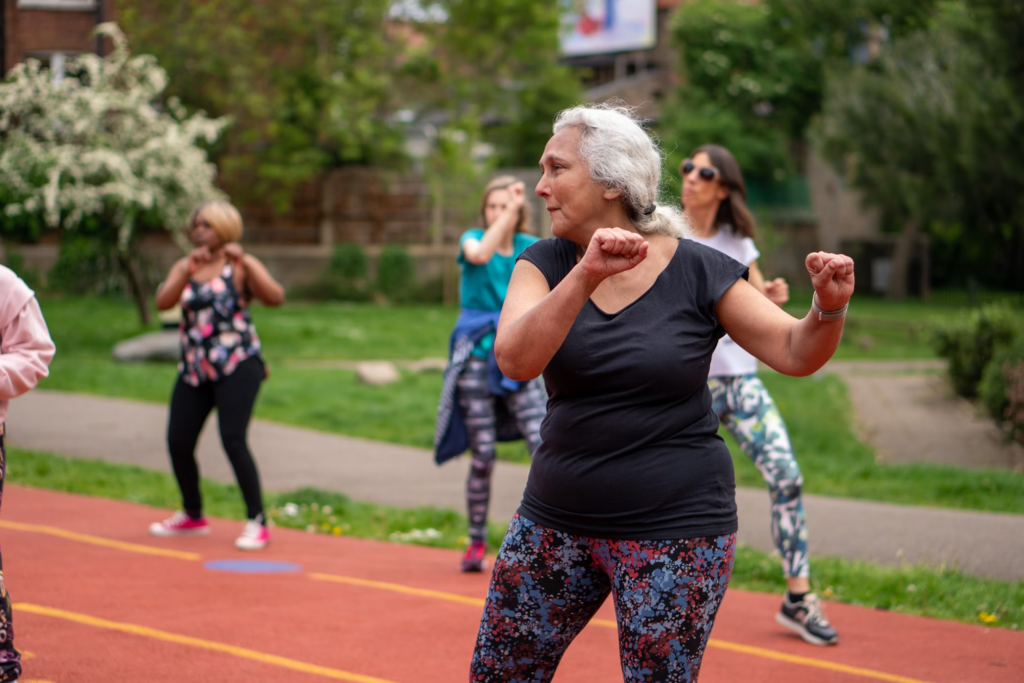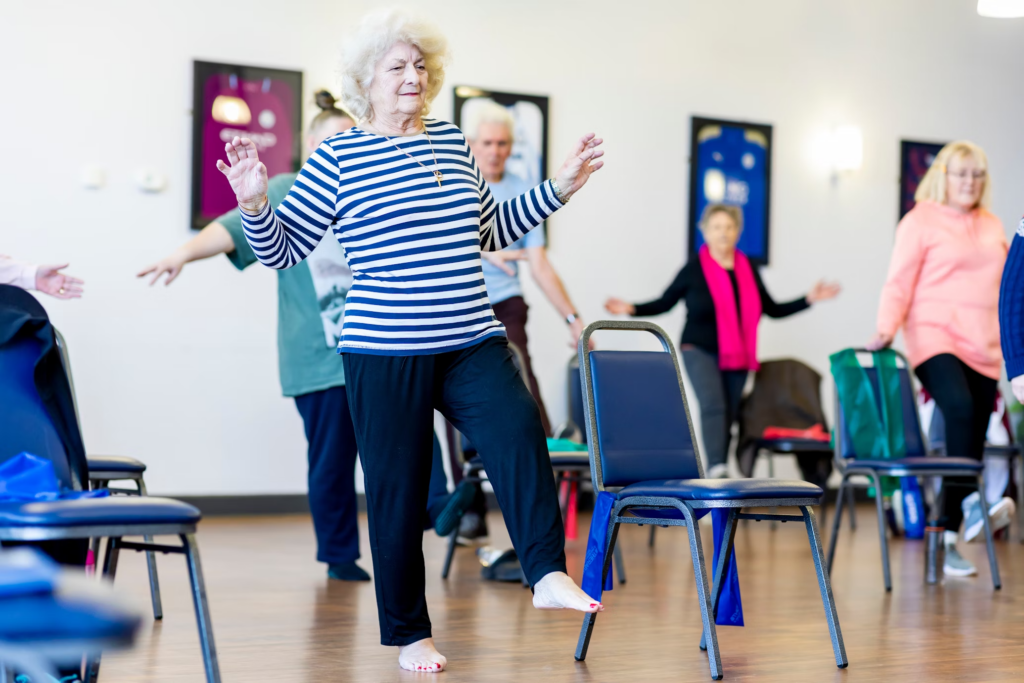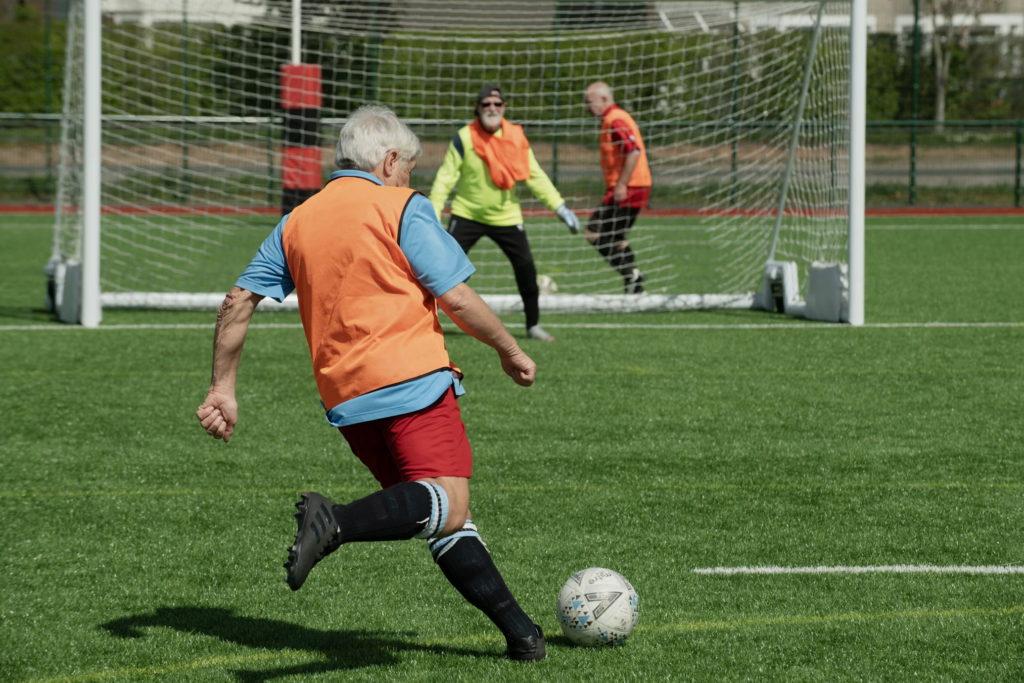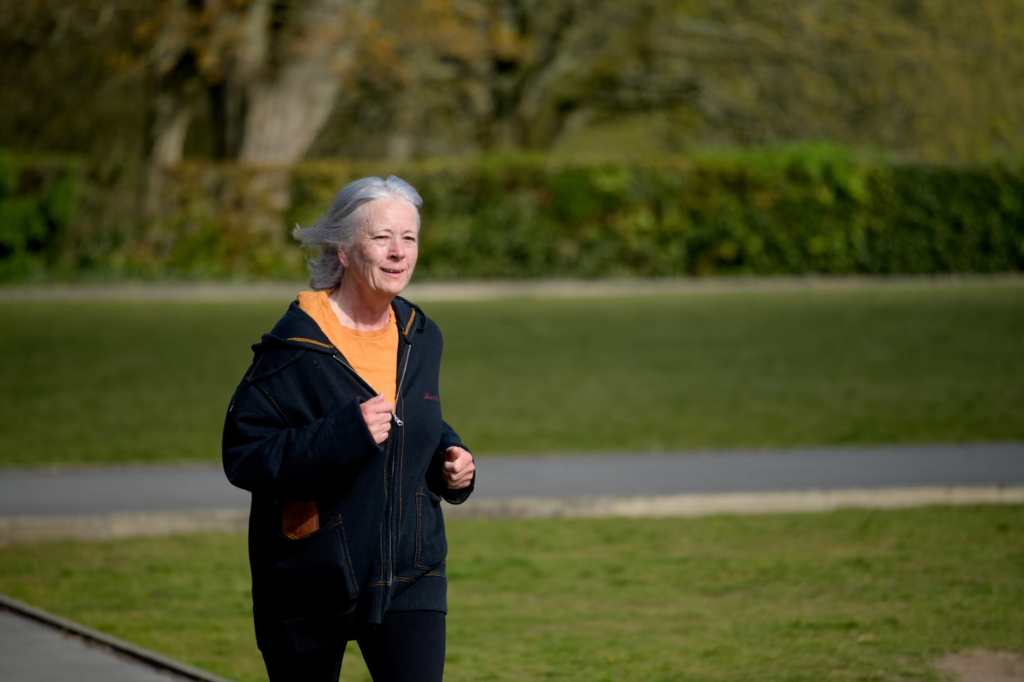
As we age, maintaining an active lifestyle becomes not only advantageous but absolutely vital. In fact, exercises seniors can perform safely and consistently are the cornerstone of preserving mobility, boosting strength, and fostering independence in everyday life. Staying active is one of the most potent ways older adults can safeguard their health, prevent injuries, and enhance their overall quality of life.
Moreover, safe and practical workouts for seniors help manage chronic conditions, improve mental well-being, and support everyday functionality. Whether your primary goal is to increase balance, build muscle strength, improve flexibility, or simply move with more confidence, establishing a consistent exercise routine can make all the difference.
In this extensive guide, we’ll walk you through a variety of senior-friendly exercises that are not only safe but also highly effective. Step by step, you’ll learn how to build a routine that supports strength, stability, and independence—ensuring you or your loved one enjoys a vibrant and active lifestyle for years to come.
Why Exercise is Critical for Seniors

Scientific data repeatedly emphasizes how important constant physical activity is to older folks. Senior low-impact exercise programs provide fantastic outcomes. Regular exercise helps elders, according to a Journal of the American Medical Association research:
- A 30–50% drop in fall risk
- Muscle loss at a 25% slower pace
- Enhanced recall and cognitive ability
- Improved control of long-standing illnesses like diabetes, heart disease, and arthritis
- Improved attitude and less chance of depression
For older adults, exercise is a lifeline to independence rather than just movement.
Four Essential Components of Senior Fitness
To build a balanced fitness plan, the National Institute on Aging recommends seniors incorporate:
- Endurance exercises for seniors (e.g., walking, swimming) for cardiovascular health
- Strength training exercises for seniors to build and maintain muscle mass
- Balance exercises for fall prevention
- Flexibility exercises for seniors to maintain range of motion
For seniors needing extra support, a professional in-home caregiver can guide and assist with tailored routines, ensuring safety and proper form.
Balance Exercises to Prevent Falls

Falls are the number one cause of injury-related hospitalizations in older adults. Thankfully, balance can be improved through targeted fall-prevention exercises for seniors.
Heel-to-Toe Walk
This balance-enhancing exercise mimics tightrope walking and is perfect for improving stability.
How to do it:
- Stand near a wall or hold onto a sturdy chair for support
- Place one foot directly in front of the other, heel touching toe
- Take 10–15 slow, deliberate steps
- Pause if needed, then continue
- For added difficulty, try walking backward using the same motion
Practicing this daily for 5–10 minutes can significantly improve coordination and lower fall risk.
Single-Leg Stance Progression

Standing on one leg is a functional skill that supports daily activities like dressing or stepping over objects.
Progression Levels:
Beginner:
- Hold a chair with both hands
- Lift one foot slightly off the ground
- Hold for 5–10 seconds per leg
Intermediate:
- Use only one hand or fingertips for balance
- Hold for 15–20 seconds
- Add gentle arm movements
Advanced:
- Balance without support
- Close eyes briefly to challenge proprioception
- Incorporate slow head turns
Strength Training for Seniors

Strength is a vital component of independence. Whether rising from a chair or carrying groceries, functional strength exercises for older adults are key to thriving, not just surviving.
Chair Sit-to-Stand
This foundational move mimics real-world actions and builds powerful leg muscles.
Basic Steps:
- Sit on the edge of a sturdy chair
- Feet flat, lean forward, then push through your heels to stand
- Lower yourself slowly back to sitting
- Repeat for 8–12 reps
To increase difficulty:
- Cross arms over chest
- Use a lower chair
- Add light dumbbells
- Slow down the descent
Wall Push-Ups
Upper body strength exercises for seniors don’t need fancy equipment. Wall push-ups are easy, safe, and effective.
Standard Version:
- Face a wall at arm’s length
- Hands at shoulder height
- Lower your chest to the wall and push back
- Do 10–15 reps
To progress:
- Step your feet farther away from the wall
- Try single-arm push-ups
- Pause for 2 seconds at the bottom
Flexibility and Mobility Exercises

Improving flexibility helps reduce stiffness, ease joint pain, and make everyday movements—like bending or reaching—more comfortable.
Seated Stretching Routine
A gentle stretching routine for seniors can be done daily.
Neck Mobility:
- Tilt head toward the shoulder
- Hold for 15–20 seconds
- Switch sides
- Add gentle chin tucks and neck rolls
Shoulder & Arm Stretch:
- Reach arms overhead, palms facing up
- Hold for 20 seconds
- Stretch one arm across your chest
- Alternate sides
Seated Forward Fold:
- Sit with legs extended or slightly bent
- Hinge forward from the hips
- Reach for your toes or shins
- Hold for 20–30 seconds
Cardiovascular Exercises for Seniors
Heart health is just as important in your 70s as in your 30s. Low-impact cardio helps seniors build endurance, improve circulation, and support overall energy levels.
Walking Routine

Walking is the most accessible and effective cardiovascular exercise for seniors:
Week 1–2:
- Walk 10 minutes a day, 5 days per week
- Focus on posture and rhythm
Week 3–4:
- Increase to 15–20 minutes
- Add arm swings
- Introduce slight inclines
Week 5+:
- Aim for 30 continuous minutes
- Try varied terrain (grass, gravel)
- Use walking poles for extra support
Water-Based Workouts
Aquatic exercises are ideal for seniors with joint pain or arthritis.
Options include:
- Water walking
- Pool noodle resistance training
- Light water aerobics
- Deep water running with a float belt
These joint-friendly exercises offer full-body conditioning with almost no impact.
How to Create a Sustainable Fitness Routine
Creating a long-term exercise plan for seniors involves more than just picking the right moves. Success lies in building a sustainable, enjoyable habit.
Key elements include:
- Frequency: 5–6 days per week, mixing exercise types
- Intensity: Light to moderate, where conversation is possible
- Duration: Start with 10–15 minutes, increase gradually
- Progression: Increase intensity or reps every 2–3 weeks
- Recovery: Rest at least once per week
When safety and consistency are top priorities, working with a caregiver or fitness coach can help ensure seniors stick with the program long-term.
Special Considerations for Common Senior Health Conditions

Arthritis
- Warm up with range-of-motion drills
- Use heat therapy before movement
- Avoid jerky movements
- Prioritize water-based workouts
Osteoporosis
- Avoid forward bends or twists
- Emphasize weight-bearing routines
- Strengthen the back and core
- Focus on posture and alignment
Diabetes
- Monitor blood sugar before and after
- Stay hydrated
- Wear cushioned, diabetic-friendly footwear
- Keep quick sugars (like glucose tabs) nearby
Building Lasting Fitness Habits for Seniors

The best workouts for seniors to increase mobility, strength, and independence are those they enjoy and can regularly commit to. Make it last like this:
- Set SMART goals: Track progress with specific, achievable targets
- Create a schedule: Exercise at the same time daily
- Prioritize enjoyment: Choose activities you love
- Stay social: Join a senior fitness class or walk with friends
- Celebrate wins: Small milestones build lasting motivation
Final Thoughts
One of the most empowering choices senior citizens can make is to include safe and efficient activities in their everyday lives. Whether starting from nothing or expanding on a current practice, every step counts. A more autonomous, lively life follows from enhanced strength, balance, and flexibility.
At Indy In-Home Care, we know how important safe, individualized exercise is to senior citizens. Our professional caregivers assist seniors at all levels by ensuring each movement is safe, efficient, and customized to fit individual needs.
Recall that starting a movement is never too late; the road to improved health begins with one step.
